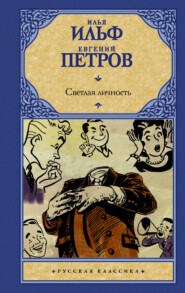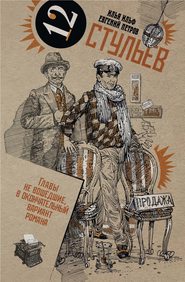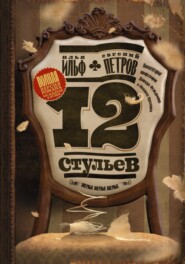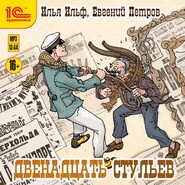По всем вопросам обращайтесь на: info@litportal.ru
(©) 2003-2025.
✖
Одноэтажная Америка / Little Golden America
Автор
Жанр
Серия
Год написания книги
1937
Теги
Настройки чтения
Размер шрифта
Высота строк
Поля
After that we were led into the anteroom, a white room with spittoons, polished and shining like samovars, and a grate was closed behind us. We had never been in prison as inmates, yet even here, in the midst of the shining cleanliness of a bank, the clang of a closing cage made us shudder.
The assistant warden of Sing Sing was a spare, strongly built man. We turned at once to the inspection.
This was visitors’ day. Three visitors could call on every prisoner-provided he had no infraction of discipline charged against him. Polished barriers divide the large room into squares. In each square, facing each other, are two short benches – the kind you find in a street-car, let us say. On these benches sit the prisoner and his guests. The visit
lasts an hour. At the exit door stands a warden. The prisoners are supposed to wear the grey prison uniform. They don’t have to wear all of it, but some part of it must be government issue, either the trousers or the grey sweater.
The hubbub of conversation in the room was reminiscent of a similar hubbub in the foyer of a motion-picture theatre. Children who had come to visit their fathers ran to taps to drink water. The old man we had previously seen did not take his eyes off his beloved son. A woman was weeping softly, and her husband, the prisoner, was looking sadly at his own hands.
The conditions of the visits were such that most certainly visitors could transmit forbidden objects to the prisoners. But that would be useless. Every prisoner, when returning to his cell, is searched immediately the door of the visiting hall is closed.
Because of the election, this was a prison holiday. Passing through the yards we saw small groups of prisoners who were taking a sun-bath in the autumn sun or playing a game of ball which was unfamiliar to us (our guide said that it was an Italian game, that there are many Italians in Sing Sing). However, here were few people. Most of the prisoners were at the time in the prison motion-picture theatre.
“At present there are 2,299 people in prison,” said Mr. Lawes’s assistant. “Of these, eighty-five have life sentences and sixteen are to be electrocuted. And all these sixteen will undoubtedly be electrocuted, although they hope for a pardon.”
The new buildings of Sing Sing are very interesting. Undoubtedly, the high general standard of American technique in building dwellings had affected its construction, especially the level of American life – what in America is called “the standard of living”.
A photograph would give the best idea of an American prison, but to our regret we were not allowed to take photographs inside Sing Sing. A prison building consists of six stories of narrow cabins, like those aboard ship, standing side by side and provided with vertical lion-cage grates. Through the length of every story stretch these metal galleries, connected with each other by metal stairways. It resembles least of all a place to live in, even a prison. The utilitarianism of the construction invests it with the appearance of a factory. The resemblance to some kind of mechanism is reinforced by the fact that all this is enclosed in a brick box, the walls of which are almost entirely occupied with windows. It is through these that daylight (and to a small extent sunlight) enters the cells, because the cells themselves have no windows.
In every such cell there is a bed, a table, and a waste can topped with a lacquered cover. On a nail hang radio earphones. There are two or three books on the table. Several photographs are on the walls— beautiful girls or baseball players or God’s angels, depending upon the inclinations of the prisoner.
In the three new buildings each prisoner is lodged in a separate cell.
This is an improved prison, Americanized to the limit, and comfortable, if one may apply such an honest, good word to a prison. It is light, and the air is comparatively good.
“In the new buildings,” said our escort, “are lodged eighteen hundred men. The remaining five hundred are in the old building, constructed a hundred years ago. Let’s go there.”
That was indeed a real Constantinople prison of the era of the sultans.
It was impossible to stand to one’s full height in these cells. When you sat down on the bed your knees touched the wall opposite. The two cots were one above the other. It was dark, damp, and frightful. Here were no shining waste cans, no soothing pictures of angels.
Something of our reaction was evidently reflected in our faces, for the assistant warden hastened to distract us.
“When they send you to me,” he said, “I’ll place you in the new buildings. I’ll even find you a cell with a view of the Hudson. We have such cells for especially deserving prisoners.”
He added quite seriously:
“I hear that in your country the penitentiary system has as its object the correction of the criminal and his return to the ranks of society. Alas, we are occupied only with the punishment of criminals.”
We began to talk about life terms.
“I have a prisoner here,” said our guide, “who has been here for twenty-two years. Every year he files a petition of clemency and each time his case is considered his petition is decisively turned down, so beastly was the crime which he committed. I would let him out. He is now quite a different man. As a matter of fact I would liberate about half the prisoners, for they no longer present any danger to society. But I am only a jailer, and I can’t do anything about it.”
We were shown the hospital, the library, the dental office, in fact, all the establishments of piety, culture, and enlightenment. We went up in elevators, we walked down beautiful corridors. Punitive cells and similar things we were not shown, of course, and out of quite comprehensible politeness we did not inquire about them.
In one of the yards we went to a one-story brick building, and the assistant warden himself opened the doors with a large key. In this house executions in the electric chair are carried out by order of the courts of the state of New York.
We noticed the chair at once.
It stands in a roomy chamber without windows, so the light comes through a glass lantern in the ceiling. We took two steps on the white marble floor and stopped. Behind the chair on the door opposite the one we entered is traced in large black letters the word: “Silence!”
The condemned are admitted through that door.
The condemned is informed early in the morning that his petition for clemency has been rejected and that the execution will take place that day. Then he is prepared for the execution. A small circle is shaved on his head to enable the electric current to pass without impediment.
Throughout the day the condemned sits in his cell. Now that the circle had been shaved on his head, he has nothing to hope for.
The execution occurs at about eleven or twelve o’clock at night.
“The fact that throughout the entire day a man experiences the torments of expectant death is very sad indeed,” declared our guide, “but we can do nothing about it. Such is the demand of the law. The law regards this circumstance as an additional punishment. On this chair two hundred men and three women have been executed.”
Nevertheless, the chair looks quite new.
This is a yellow wooden chair with a high back and arm rests. At first glance it seems innocuous, and if it were not for the leather bracelets with which the hands and feet of the condemned are tied, it could very well stand in some highly moral family home. A deafish grandfather might well be sitting in it to read his newspapers there.
But an instant later the chair was very repellent to us, and especially depressing were its polished arm rests. Better not to think about those who had polished them with their elbows.
A few yards from the chair stand four substantial railway station benches. These are for the witnesses. Here is a small table. A wash-stand is built into the wall. That is all there is to the furnishings in the midst of which is accomplished the transition from a worse into a better world.No doubt, young Thomas Alva Edison never dreamed that his electricity would perform such depressing duties.
The door in the left corner leads to a compartment larger than a telephone booth. On its wall is a marble switchboard, the most ordinary kind of switchboard with a heavy old-fashioned knife switch, the kind available at any mechanical shop or in the operating booth of a provincial motion-picture theatre. The knife switch is pushed in, and the current beats with great force through the helmet into the head of the condemned. That is all. That is the entire technique.
“The man who turns on the current,” said our guide, “receives a hundred and fifty dollars for each such performance. There are any number of applicants for this job.”
Of course, all the talk we had heard about three men switching on the current and that not one of them knows which of them actually is responsible for the execution proved to be an invention. No, it is all much simpler. The man switches on the current himself and knows all that happens, and fears only one thing – that competitors may take this profitable work away from him.
From the room where the execution is carried out a door leads to the morgue, and beyond that is a very quiet room filled to the ceiling with simple wooden coffins.
“The coffins are made right here in prison by the prisoners them-selves,” our guide informed us.
Well, we thought we had seen enough! It was time to go!
Suddenly Mr. Adams asked to be allowed to sit in the electric chair, so that he might experience the sensation of a man condemned to death.
“No, no, gentlemen!” he muttered. “It will not take very long.”
He settled himself firmly on the spacious seat and looked at us triumphantly. The usual procedure was being carried out on him. He was strapped to the back of the chair with a wide leather belt, his legs were pressed with bracelets against the oaken chair legs, his hands were tied to the arm rests. Again these accursed arm rests! They did not put the helmet on Mr. Adams, but he begged them so that they finally attached the end of the electric connection to his shining pate. It all became very frightful for a minute. Mr. Adams’s eyes shone with incredible curiosity. It was evident at once that he was one of those people who want to do everything, who want to touch everything with their hands, to see and hear everything themselves.
Before departing from Sing Sing we went into the church where at the time a motion-picture performance was going on. Fifteen hundred prisoners were looking at a picture entitled Doctor Socrates. Here we saw the laudable effort of the administration to provide the imprisoned men with the very latest motion picture. As a matter of fact, outside the prison Doctor Socrates was being exhibited that very day in the city of Ossining. What utterly amazed us, however, was the fact that the picture portrayed the life of bandits, and to show it to the prisoners was tantamount to teasing an alcoholic with a vision of a bottle of vodka.
But it was already late. We thanked the administration for a pleasant visit, the lion’s cage opened, and we went away. After sitting in the electric chair, Mr. Adams suddenly became melancholy; he was silent all the way back.
Returning, we saw a truck that had run off the road. Its rear part was entirely off. A crowd was discussing the accident. Another crowd, much larger, was listening to an orator who was talking about that day’s election. Here all the automobiles were carrying election stickers on their rear windows. Farther on, in the groves and forests flared the mad autumn.
In the evening we went with Dos Passes to look at the happiness of a New York counter-jumper. It was seven o’clock. A marquee the size of half a house was alight over the entrance of the Hollywood Restaurant. Young men in semi-military uniform, customary among hotel, restaurant, and theatre servants, were skilfully pushing people in. In the lobby hung photographs of naked girls pining with love for the populace.
As in all restaurants where it is customary to dance, the centre of the Hollywood was occupied by a longish platform, the floor of which was no more polished than the arm rests of the electric chair. On the sides of this platform and rising somewhat above it were the tables. Over all rose the tumultuous jazz.
Jazz may be disliked, especially in America, where it is impossible to hide from it. But, generally speaking, American jazz is well played. The jazz of the Hollywood Restaurant presented an amazingly well-composed eccentric musical intricacy altogether pleasant to the ear.
The assistant warden of Sing Sing was a spare, strongly built man. We turned at once to the inspection.
This was visitors’ day. Three visitors could call on every prisoner-provided he had no infraction of discipline charged against him. Polished barriers divide the large room into squares. In each square, facing each other, are two short benches – the kind you find in a street-car, let us say. On these benches sit the prisoner and his guests. The visit
lasts an hour. At the exit door stands a warden. The prisoners are supposed to wear the grey prison uniform. They don’t have to wear all of it, but some part of it must be government issue, either the trousers or the grey sweater.
The hubbub of conversation in the room was reminiscent of a similar hubbub in the foyer of a motion-picture theatre. Children who had come to visit their fathers ran to taps to drink water. The old man we had previously seen did not take his eyes off his beloved son. A woman was weeping softly, and her husband, the prisoner, was looking sadly at his own hands.
The conditions of the visits were such that most certainly visitors could transmit forbidden objects to the prisoners. But that would be useless. Every prisoner, when returning to his cell, is searched immediately the door of the visiting hall is closed.
Because of the election, this was a prison holiday. Passing through the yards we saw small groups of prisoners who were taking a sun-bath in the autumn sun or playing a game of ball which was unfamiliar to us (our guide said that it was an Italian game, that there are many Italians in Sing Sing). However, here were few people. Most of the prisoners were at the time in the prison motion-picture theatre.
“At present there are 2,299 people in prison,” said Mr. Lawes’s assistant. “Of these, eighty-five have life sentences and sixteen are to be electrocuted. And all these sixteen will undoubtedly be electrocuted, although they hope for a pardon.”
The new buildings of Sing Sing are very interesting. Undoubtedly, the high general standard of American technique in building dwellings had affected its construction, especially the level of American life – what in America is called “the standard of living”.
A photograph would give the best idea of an American prison, but to our regret we were not allowed to take photographs inside Sing Sing. A prison building consists of six stories of narrow cabins, like those aboard ship, standing side by side and provided with vertical lion-cage grates. Through the length of every story stretch these metal galleries, connected with each other by metal stairways. It resembles least of all a place to live in, even a prison. The utilitarianism of the construction invests it with the appearance of a factory. The resemblance to some kind of mechanism is reinforced by the fact that all this is enclosed in a brick box, the walls of which are almost entirely occupied with windows. It is through these that daylight (and to a small extent sunlight) enters the cells, because the cells themselves have no windows.
In every such cell there is a bed, a table, and a waste can topped with a lacquered cover. On a nail hang radio earphones. There are two or three books on the table. Several photographs are on the walls— beautiful girls or baseball players or God’s angels, depending upon the inclinations of the prisoner.
In the three new buildings each prisoner is lodged in a separate cell.
This is an improved prison, Americanized to the limit, and comfortable, if one may apply such an honest, good word to a prison. It is light, and the air is comparatively good.
“In the new buildings,” said our escort, “are lodged eighteen hundred men. The remaining five hundred are in the old building, constructed a hundred years ago. Let’s go there.”
That was indeed a real Constantinople prison of the era of the sultans.
It was impossible to stand to one’s full height in these cells. When you sat down on the bed your knees touched the wall opposite. The two cots were one above the other. It was dark, damp, and frightful. Here were no shining waste cans, no soothing pictures of angels.
Something of our reaction was evidently reflected in our faces, for the assistant warden hastened to distract us.
“When they send you to me,” he said, “I’ll place you in the new buildings. I’ll even find you a cell with a view of the Hudson. We have such cells for especially deserving prisoners.”
He added quite seriously:
“I hear that in your country the penitentiary system has as its object the correction of the criminal and his return to the ranks of society. Alas, we are occupied only with the punishment of criminals.”
We began to talk about life terms.
“I have a prisoner here,” said our guide, “who has been here for twenty-two years. Every year he files a petition of clemency and each time his case is considered his petition is decisively turned down, so beastly was the crime which he committed. I would let him out. He is now quite a different man. As a matter of fact I would liberate about half the prisoners, for they no longer present any danger to society. But I am only a jailer, and I can’t do anything about it.”
We were shown the hospital, the library, the dental office, in fact, all the establishments of piety, culture, and enlightenment. We went up in elevators, we walked down beautiful corridors. Punitive cells and similar things we were not shown, of course, and out of quite comprehensible politeness we did not inquire about them.
In one of the yards we went to a one-story brick building, and the assistant warden himself opened the doors with a large key. In this house executions in the electric chair are carried out by order of the courts of the state of New York.
We noticed the chair at once.
It stands in a roomy chamber without windows, so the light comes through a glass lantern in the ceiling. We took two steps on the white marble floor and stopped. Behind the chair on the door opposite the one we entered is traced in large black letters the word: “Silence!”
The condemned are admitted through that door.
The condemned is informed early in the morning that his petition for clemency has been rejected and that the execution will take place that day. Then he is prepared for the execution. A small circle is shaved on his head to enable the electric current to pass without impediment.
Throughout the day the condemned sits in his cell. Now that the circle had been shaved on his head, he has nothing to hope for.
The execution occurs at about eleven or twelve o’clock at night.
“The fact that throughout the entire day a man experiences the torments of expectant death is very sad indeed,” declared our guide, “but we can do nothing about it. Such is the demand of the law. The law regards this circumstance as an additional punishment. On this chair two hundred men and three women have been executed.”
Nevertheless, the chair looks quite new.
This is a yellow wooden chair with a high back and arm rests. At first glance it seems innocuous, and if it were not for the leather bracelets with which the hands and feet of the condemned are tied, it could very well stand in some highly moral family home. A deafish grandfather might well be sitting in it to read his newspapers there.
But an instant later the chair was very repellent to us, and especially depressing were its polished arm rests. Better not to think about those who had polished them with their elbows.
A few yards from the chair stand four substantial railway station benches. These are for the witnesses. Here is a small table. A wash-stand is built into the wall. That is all there is to the furnishings in the midst of which is accomplished the transition from a worse into a better world.No doubt, young Thomas Alva Edison never dreamed that his electricity would perform such depressing duties.
The door in the left corner leads to a compartment larger than a telephone booth. On its wall is a marble switchboard, the most ordinary kind of switchboard with a heavy old-fashioned knife switch, the kind available at any mechanical shop or in the operating booth of a provincial motion-picture theatre. The knife switch is pushed in, and the current beats with great force through the helmet into the head of the condemned. That is all. That is the entire technique.
“The man who turns on the current,” said our guide, “receives a hundred and fifty dollars for each such performance. There are any number of applicants for this job.”
Of course, all the talk we had heard about three men switching on the current and that not one of them knows which of them actually is responsible for the execution proved to be an invention. No, it is all much simpler. The man switches on the current himself and knows all that happens, and fears only one thing – that competitors may take this profitable work away from him.
From the room where the execution is carried out a door leads to the morgue, and beyond that is a very quiet room filled to the ceiling with simple wooden coffins.
“The coffins are made right here in prison by the prisoners them-selves,” our guide informed us.
Well, we thought we had seen enough! It was time to go!
Suddenly Mr. Adams asked to be allowed to sit in the electric chair, so that he might experience the sensation of a man condemned to death.
“No, no, gentlemen!” he muttered. “It will not take very long.”
He settled himself firmly on the spacious seat and looked at us triumphantly. The usual procedure was being carried out on him. He was strapped to the back of the chair with a wide leather belt, his legs were pressed with bracelets against the oaken chair legs, his hands were tied to the arm rests. Again these accursed arm rests! They did not put the helmet on Mr. Adams, but he begged them so that they finally attached the end of the electric connection to his shining pate. It all became very frightful for a minute. Mr. Adams’s eyes shone with incredible curiosity. It was evident at once that he was one of those people who want to do everything, who want to touch everything with their hands, to see and hear everything themselves.
Before departing from Sing Sing we went into the church where at the time a motion-picture performance was going on. Fifteen hundred prisoners were looking at a picture entitled Doctor Socrates. Here we saw the laudable effort of the administration to provide the imprisoned men with the very latest motion picture. As a matter of fact, outside the prison Doctor Socrates was being exhibited that very day in the city of Ossining. What utterly amazed us, however, was the fact that the picture portrayed the life of bandits, and to show it to the prisoners was tantamount to teasing an alcoholic with a vision of a bottle of vodka.
But it was already late. We thanked the administration for a pleasant visit, the lion’s cage opened, and we went away. After sitting in the electric chair, Mr. Adams suddenly became melancholy; he was silent all the way back.
Returning, we saw a truck that had run off the road. Its rear part was entirely off. A crowd was discussing the accident. Another crowd, much larger, was listening to an orator who was talking about that day’s election. Here all the automobiles were carrying election stickers on their rear windows. Farther on, in the groves and forests flared the mad autumn.
In the evening we went with Dos Passes to look at the happiness of a New York counter-jumper. It was seven o’clock. A marquee the size of half a house was alight over the entrance of the Hollywood Restaurant. Young men in semi-military uniform, customary among hotel, restaurant, and theatre servants, were skilfully pushing people in. In the lobby hung photographs of naked girls pining with love for the populace.
As in all restaurants where it is customary to dance, the centre of the Hollywood was occupied by a longish platform, the floor of which was no more polished than the arm rests of the electric chair. On the sides of this platform and rising somewhat above it were the tables. Over all rose the tumultuous jazz.
Jazz may be disliked, especially in America, where it is impossible to hide from it. But, generally speaking, American jazz is well played. The jazz of the Hollywood Restaurant presented an amazingly well-composed eccentric musical intricacy altogether pleasant to the ear.

















